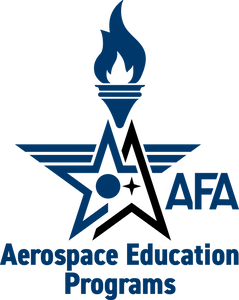|
WHY STEM EDUCATION?
Students are the future.The Air & Space Forces Association (AFA) believes in the power that students hold in securing our nation’s future; however, only 1 in 5 high school students are interested in careers in science, technology, engineering, or math (STEM). To equip our students with the knowledge and skills required for future innovation, we must increase the number of students and teachers in STEM fields.
That’s why AFA is part of the nationwide initiative to improve STEM learning— including aerospace education—to better prepare students for the competitive global economy and increase their chances of becoming future leaders who solve our nation’s toughest challenges. |
Supporting STEM education through awards, grants, scholarships, professional development opportunities, and K-12 programs.
|
About StellarXplorers
|
|
In September 2014, the Air & Space Forces Association received a request from the Secretary of the US Air Force to develop a national STEM program that would focus on space (much like AFA's CyberPatriot program was focused on cybersecurity).
Bill Yucuis, an aerospace engineer with years of prior experience coordinating an Aerospace Magnet Program, was tasked as the chair of the committee that would go on to build the program from the ground up. Air Force retired space experts, Tim Brock and Stephen Gourley, along with AFA figurehead David "Buck" Buckwalter, came together to create StellarXplorers. For its first six competition seasons, the program was entirely volunteer-run. A small full-time staff now committed to StellarXplorers, but the volunteers still play a major role in this one-of-a-kind space education that is challenging students from all backgrounds. |
StellarXplorers welcomes to the program those who are interested in space, no matter what level of experience, as a place to share thoughts, ideas, and experiences with others who share a similar passion for problem-solving, team collaboration, and space system design. Participation provides students with leadership and collaboration opportunities and allows for students to cultivate relationships with industry professionals.

